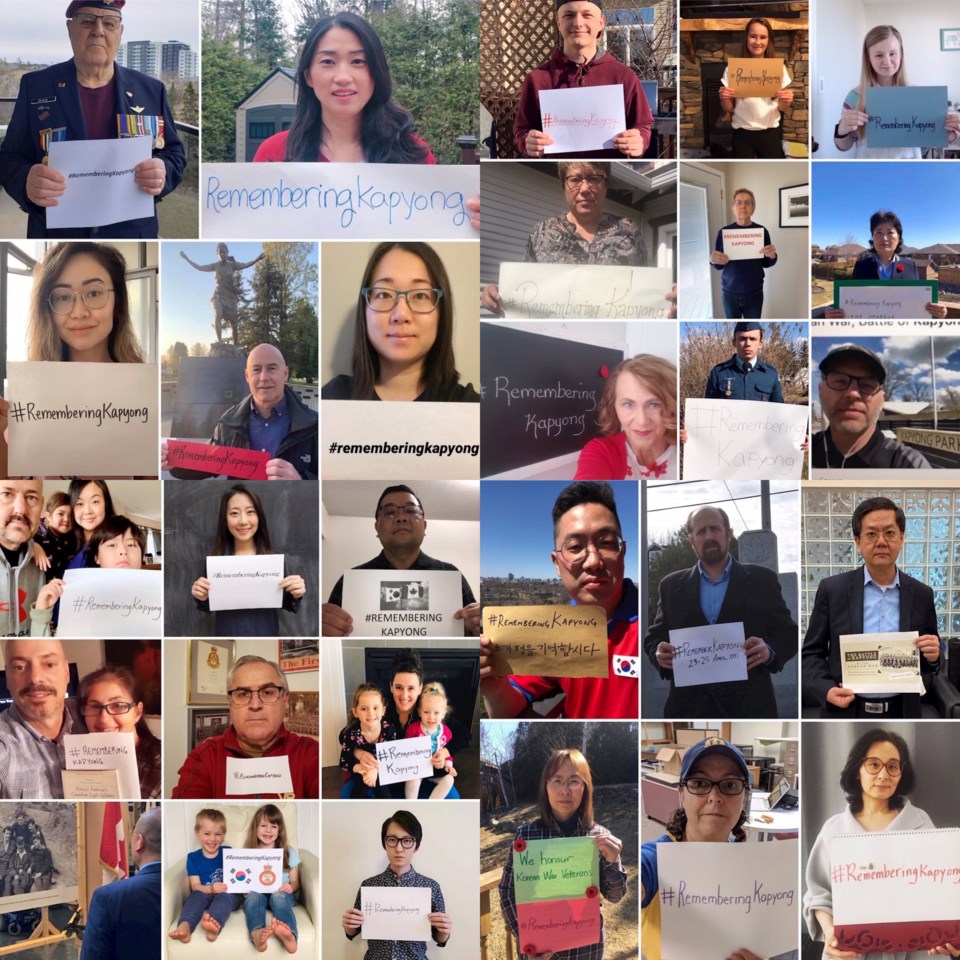This weekend marks the 70th anniversary of the Battle of Kapyong, a historic battle during the Korean War (April 23 to 25, 1951) where Canadian valour earned the 2nd Battalion of Princess Patricia’s Canadian Light Infantry a U.S. Presidential Unit Citation, never awarded to a Canadian unit.
On Saturday at 8 a.m. pacific, a virtual commemorative event will take place with Korean War Veterans, Parliamentarians, Korean Ambassador and members of the diplomatic corps, representatives of PPCLI and other Regiments, Korean community leaders, educators, students and special guests.
During that virtual ceremony, there will also be an unveiling of a 70th anniversary painting “2PPCLI in Korea 1951” (commissioned by the PPCLI Association) by Korean War Veteran, James Keirstead.
The Korean War began on June 25, 1950 when North Korean troops invaded the Republic of Korea.
A United Nations force soon came to the defence of the people of South Korea. More than 26,000 Canadians, from all three branches of the military, would serve in the conflict. By the time the active fighting came to a close with the signing of the Korean Armistice Agreement on July 27, 1953, 516 Canadians had died and more than a thousand wounded.
The Battle of Kapyong was a key chapter for our country in the Korean War.
A backgrounder on the Battle of Kapyong
In late April 1951, Chinese and North Korean forces launched a counter-attack against the United Nations lines. In one sector, South Korean forces were overwhelmed and forced to retreat, placing them in danger of being overrun. To cover their retreat, the 27th British Commonwealth Infantry Brigade – along with its Canadian contingent – was sent to the Kapyong Valley.
Surrounded by hills, the Kapyong Valley is less than three kilometers across at its widest point. Some 700 members of the 2nd Battalion, Princess Patricia’s Canadian Light Infantry were situated on Hill 677, with soldiers of the Royal Australian Regiment and the British Middlesex Regiment also positioned nearby.
Between April 23 and 24, the Australians came under intense attack and were forced to retreat. At 10 p.m. on April 24, it was the Canadians’ turn to engage in fierce fighting with the advancing Chinese and North Korean troops.
At times the greatly outnumbered Canadians were overrun by enemy soldiers. Our troops were even forced to call in a United Nations artillery barrage on their own defensive positions. They took cover in their slit trenches, allowing the exposed enemy forces to take the brunt of the artillery fire. The risky tactic did its job, and the Communist troops were forced to pull back. .
The fighting continued through the night and into the morning of April 25. At times, the Canadians were surrounded by enemy forces and began to run low on food and ammunition. In another daring move, they had to be resupplied by an air drop but ultimately the Communist troops completely withdrew. The Canadians had helped hold the line in the Kapyong Valley.
This victory came at a cost, however, with 10 Canadians being killed and 23 more wounded in the fighting. Their efforts did not go unnoticed, and the 2nd Battalion, Princess Patricia’s Canadian Light Infantry was later awarded the United States Presidential Unit Citation – a very rare honour for a Canadian unit.
